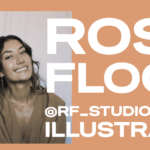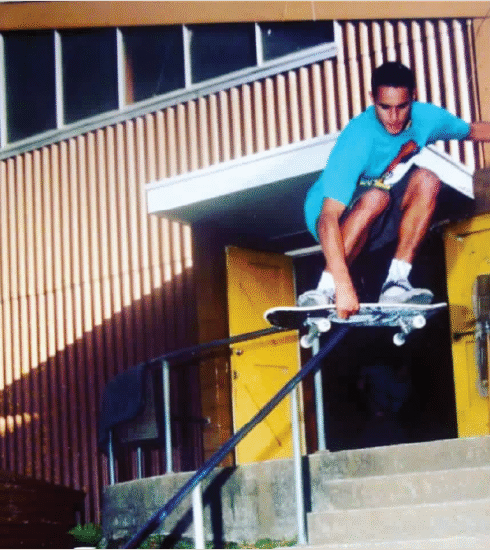Shani McGuire – Issue 18
Nexus: Your works are centred around portraits of people, why is that?
Shani: We can usually make assumptions from the way people look but my more detailed portraits often focus on a larger, unseen story. Drawing people outside of the mundane is very comforting in practice but I always find myself composing the atmosphere first, then assessing where the subject might fit into that particular world. I love sci-fi and fantasy so I’m often driven to explore characters and archetypes within those settings too. These scenes never mirror reality, they are always set somewhere quite fictional.
Nexus: What does being an artist mean to you?
Shani: Being an artist has always been about framing my creative identity. It’s about sharing the things that fascinate me, the things I love, and even the things I’m insecure about. When I started making art, it gave me a place to explore my ego, and even when I’m not drawing, I’m expressing myself through fashion, stories, or poetry. I probably couldn’t not be an artist. It might be at the core of who I am. When the canvas is blank, I have the power to make whatever I want, and I think a lot of being an artist is having the confidence to exercise that freedom.
Nexus: Is it difficult to ‘make it’ as an artist? What does ‘making it’ look like?
Shani: I think ‘making it’ is up to our own interpretation, but for myself, it’s usually about the way we inspire others. To have total strangers feel connected to my work is a huge part of my motivation, and to have those I know see different dimensions of who I am is also really important to me. In a lot of ways, art is about self-acceptance and to ‘make it’ is acknowledging your creative power as well as its visual perception.
Nexus: What does your creative process look like?
Shani: Sometimes, it’s finding a screen and a comfortable spot on the couch. Other times, it’s staying up until 5am, rushing to finish a piece before I lose my inspiration. There’s a lot of procrastination involved, but when I do get my iPad set up, it’s usually as quick as opening an app and starting a new canvas. Realism takes time. It takes a while to find good references too (unless I’m drawing from life). Sketching takes me about 5-10 minutes max, but colouring my pieces can take up to a day or even a month, depending on my mood. Mostly, it’s the latter.
Nexus: What are your least favourite pieces and why?
Shani: There are days where I feel super connected to my work and others where I feel really distant. When I had been revising my style a few years ago, I drew a lot of crappy portraits; my least favourite being the bland, realistic line art I designed to make my portfolio seem more “commercial.” They were completely devoid of any character and I don’t think I enjoyed drawing them too much either. When I look back, I think it was obvious that I focused on technique rather than interpretation. Now, after some serious trial and error, I mostly just draw whatever I want without worrying about where it ends up.
Nexus: What advice and tips would you give to young and aspiring artists?
Shani: It’s really important to recognise what brings you joy. It’s easy to feel pressured by what other artists are doing in the community (especially online), so focus on what you want to create, even if the subject is niche or out of your technical comfort zone. The advice I always hear is practice, but again there’s so much focus on technique. It’s okay to make art without a plan and take risks. Draw what you want, not what you think others want to see.





